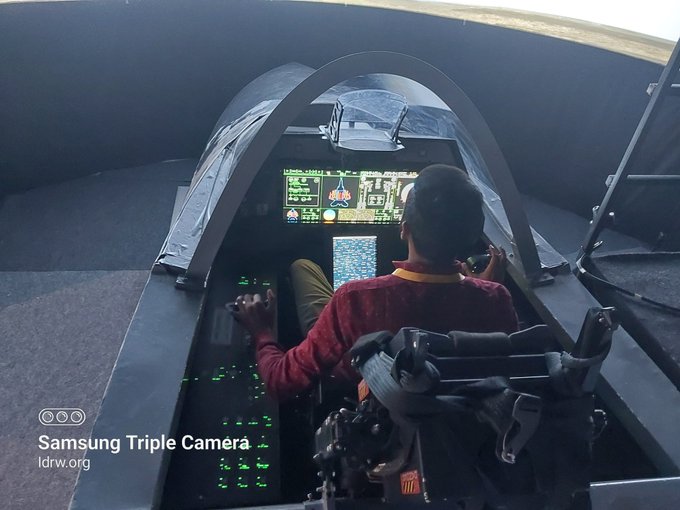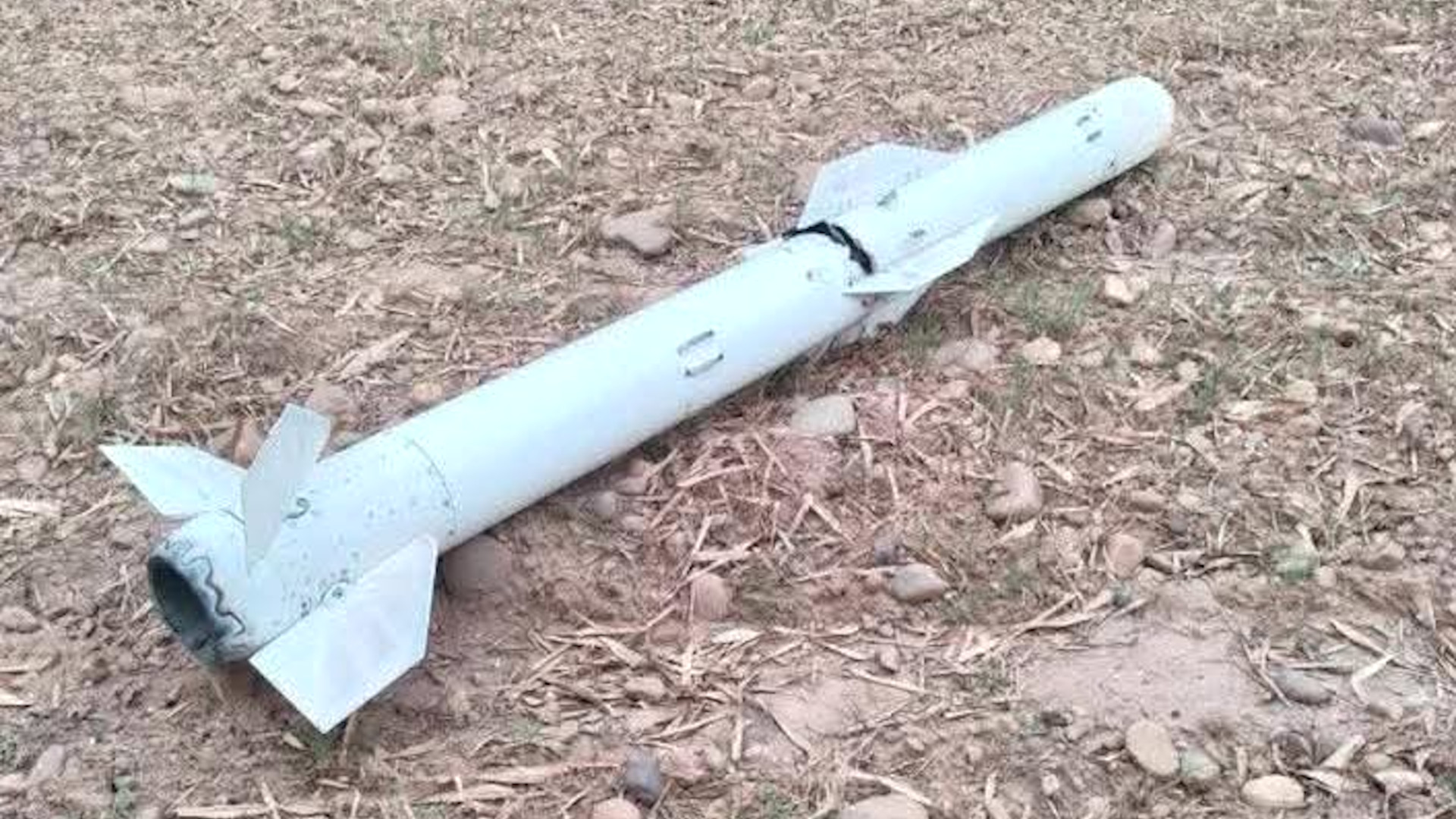SOURCE: RAUNAK KUNDE / NEWS BEAT / IDRW.ORG

Amid swirling reports that the Indian Air Force (IAF) is pushing the Ministry of Defence (MoD) to expand its fighter combat strength to 60 squadrons, a senior IAF official has dismissed the claims as “media speculation.” Speaking to idrw.org, the official clarified that no such proposal is under consideration, emphasizing that the IAF remains committed to its sanctioned strength of 42 squadrons while focusing on modernization and capability enhancement to counter regional threats.
Recent media reports suggested that the IAF, concerned about the growing airpower of China and Pakistan, had proposed increasing its fighter strength from the current 31 squadrons to 60 squadrons by 2040. The speculation gained traction amid India’s ongoing efforts to bolster its air combat capabilities, including the induction of Rafale jets, the development of the indigenous Advanced Medium Combat Aircraft (AMCA), and plans to procure additional squadrons of the Tejas Light Combat Aircraft (LCA). The reported proposal was seen as a response to the People’s Liberation Army Air Force (PLAAF) operating over 3,000 aircraft, including advanced fifth-generation fighters like the J-20, and Pakistan’s acquisition of Chinese J-10C jets.
Continue readingSOURCE: AFI

In a significant boost to India’s indigenous defense capabilities, the Advanced Medium Combat Aircraft (AMCA) project, a cornerstone of the country’s quest for self-reliance in advanced fighter jet technology, has taken a major step forward. Dr. Samir V. Kamat, Chairman of the Defence Research and Development Organisation (DRDO), recently announced that the execution model for the AMCA has been approved, opening the door for widespread participation from both public and private sectors.
In a groundbreaking move, Hindustan Aeronautics Limited (HAL), private industry players, and joint ventures can now bid for the project, fostering a collaborative approach to developing India’s first fifth-generation stealth fighter. Dr. Kamat outlined an ambitious timeline, with the first prototype expected to fly by the end of 2029, development completion targeted for 2034, and production slated to commence in 2035.
Continue readingSOURCE: AFI

In a significant development amid heightened tensions in South Asia, China’s Ministry of National Defense has officially confirmed that the PL-15E beyond-visual-range (BVR) air-to-air missile, supplied to Pakistan, is indeed an export variant, aligning with long-standing claims by the Indian defense community. The confirmation came during a press briefing on Thursday, where ministry spokesperson Zhang Xiaogang addressed questions regarding India’s reported capture of a PL-15E missile during recent India-Pakistan skirmishes and the potential for India to reverse-engineer its technology. This statement, reported by The Paper, sheds light on the missile’s capabilities, China’s strategic arms exports, and the broader implications for regional security dynamics.
Zhang Xiaogang, responding to queries about the PL-15E’s capture by India, clarified that the missile is an export model that has been openly showcased at multiple defense exhibitions, both domestically in China and internationally. “The missile in question is an exported piece of equipment,” Zhang stated, emphasizing its status as a downgraded variant of the domestically used PL-15 missile. This acknowledgment corroborates assertions by Indian defense analysts who have long suspected that the PL-15E, supplied to the Pakistan Air Force (PAF), is a less capable version of China’s advanced PL-15, which boasts a reported range of 200-300 kilometers and is designed for high-value targets like airborne early warning and control (AWACS) aircraft and fighters.
Continue readingSOURCE: AFI

In a significant step toward modernization, the Border Security Force (BSF), India’s second-largest Central Armed Police Force, is preparing to roll out new digital camouflage pattern uniforms for all ranks. The move, announced on May 29, 2025, comes at a critical juncture as tensions along the Indo-Pakistan border remain heightened following the recent military conflict during Operation Sindoor. The updated uniforms, designed to enhance operational effectiveness and align with global standards, signal India’s commitment to strengthening its frontline defenses while adapting to evolving security challenges.
The BSF, tasked with guarding India’s borders with Pakistan and Bangladesh, operates in some of the most challenging and hostile environments. The introduction of the digital camouflage uniform, which includes both combat and daily wear, is a direct response to the need for improved operational readiness. According to sources cited by News18, the digital camouflage patterns have been finalized and approved after 1.5 years of design and innovation, with implementation set to begin immediately in a phased manner across all theaters of deployment.
Continue readingSOURCE: AFI

The India-Pakistan conflict has long been a contentious issue, often exacerbated by misinformation and propaganda. A notable instance of this occurred when Pakistani state media claimed that their air force had shot down five Indian jets during an aerial skirmish. This narrative was heavily amplified by a group of Pakistani-origin journalists working for international media outlets, creating a citation loop that lent undue credibility to the claim. However, a closer examination reveals a lack of hard evidence—such as radar data or HUD footage—to substantiate these assertions.
Following the alleged incident, several Pakistani-origin journalists published articles in prominent international news outlets, including Nikkei Asia, CNN, New York Times, Reuters, Bloomberg UK, and WSJ. These journalists—Adnan Aamir, Sophia Saifi, Salman Masood, Zia Ur Rehman, Asif Shahzad, Idrees Ali, Kamran Haider, and Saeed Shah—repeated the Pakistani state’s claim of downing five Indian jets. Their articles often cited each other or official Pakistani statements, creating a self-reinforcing loop that gave the impression of a widely corroborated event.
Continue readingSOURCE: UNI

India foiled Pakistan’s planned offensive on the intervening night of May 9 and May 10 by firing BrahMos missiles, the country’s prime minister, Shehbaz Sharif, has admitted in a public speech.
Speaking at an event in Azerbaijan, Sharif said that the Pakistani armed forces had planned to attack India before morning prayers, but before it could do so, several provinces of Pakistan were attacked by BrahMos missiles.
Continue readingSOURCE: PTI

The Chinese military on Thursday declined comment on the performance of China-made weapons used by Pakistan in the recent conflict with India. Chinese Defence Ministry Spokesperson Sr. Col. Zhang Xiaogang also played down the reports of India recovering an unexploded PL-15E, a radar-guided beyond visual range missile, said to be the most advanced rocket of its kind produced by China.
“The missile you mentioned is an export equipment and has been shown at defence exhibitions at home and abroad many times”, Zhang said in the Chinese defence ministry’s first media briefing after the May 7-10 military conflict between India and Pakistan.
Continue readingSOURCE: IANS

India on Thursday, May 29, said that it remains in touch with the authorities in Tehran for locating three Indian nationals who have gone missing in Iran.
“The three Indian nationals who had landed there some time ago are missing. We are in touch with the Iranian authorities to locate them, ensure their safety and security, and facilitate their eventual return home. We are in daily contact with the authorities there and are receiving good cooperation from the Iranian side. We are also in touch with the families of the missing people and extending all possible help,” Ministry of External Affairs (MEA) spokesperson Randhir Jaiswal stated during a weekly media briefing in New Delhi.
Continue readingSOURCE: IANS

The Central government on Thursday categorically denied a viral social media post claiming that a MiG-29 UPG fighter jet of the Indian Air Force (IAF) was shot down and its pilot killed on May 7.
The PIB Fact Check unit has termed the claim fake and far from the truth, clarifying that the pilot in question is safe, on duty, and actively deployed. “A post circulating on social media claims that an Indian Air Force jet MiG-29 UPG has been shot down, and the IAF pilot has died. This claim is fake. The @IAF_MCC pilot is safe, on duty, and currently deployed,” the official PIB Fact Check handle said in a post on X.
Continue readingSOURCE: IANS

A Bangladeshi diplomat was recently forced to return to Dhaka instead of joining his new posting in Kolkata after he opposed animal sacrifices on Eid in the High Commission premises to respect feelings of Hindus and non-Muslims.
Shabab-bin Ahmed, who was posted as Minister in the Embassy of Dhaka at The Hague, was cleared by Bangladesh’s Ministry of Foreign Affairs’ Administrative Division (Establishment) via an order dated November 21, 2024 to join as Deputy High Commissioner at the Kolkata mission.
Continue readingSOURCE: PTI

Envoys of six countries, including Turkiye and Bangladesh, on Thursday presented credentials to President Droupadi Murmu at the Rashtrapati Bhavan here.
Those who presented their credentials were Ali Murat Ersoy, Ambassador of the Republic of Turkiye, M Riaz Hamidullah, High Commissioner of Bangladesh and Azamat Yeskaraev, Ambassador of the Republic of Kazakhstan, the President’s office said.
Continue readingSOURCE: PTI

The Delhi Police has arrested a man from Rajasthan for allegedly aiding Pakistani Intelligence Operatives (PIOs) by supplying Indian mobile SIM cards for espionage activities, officials said on Thursday. The accused, identified as Kasim (34), had travelled to Pakistan twice — first in August 2024 and again in March 2025 — and stayed there for about 90 days, they said.
During his visits, he is suspected to have met officials of the Pakistan’s spy agency Inter-Services Intelligence (ISI), a senior police officer said.
Continue readingSOURCE: PTI

The Anti-Terrorism Squad (ATS) of Maharashtra Police has arrested a resident of neighbouring Thane for allegedly spying for Pakistan, a senior official said on Thursday. The accused, whose name was not disclosed, worked for an important organisation in Mumbai, and was “honey-trapped” by a Pakistani agent who posed as a woman and befriended him on Facebook, said the official.
He was found to have shared sensitive information about a vital installation with the ‘Pakistan Intelligence Operative’ through WhatsApp from November 2024 to March 2025, the official said.
Continue readingSOURCE: IDRW.ORG

In a landmark demonstration of technological prowess and strategic coordination, India’s air defense units, comprising the indigenous Akash, Indo-Israeli MR-SAM, and Russian S-400 systems, have proven their mettle during Operation Sindoor on May 8–9, 2025. This operation, launched in response to the Pahalgam terror attack that claimed 26 lives, showcased India’s ability to integrate diverse air defense systems into a robust, multi-layered shield, neutralizing over 500 Pakistani swarm drones and missiles targeting 15 military and civilian locations. This seamless interoperability between Indian, Israeli, and Russian systems marks a global first, establishing India as a leader in advanced air defense capabilities.
Operation Sindoor, executed with surgical precision, highlighted India’s multi-tiered air defense architecture, which effectively countered a complex, multi-directional assault. The Indian Air Force (IAF) and Army deployed a combination of the Akash Surface-to-Air Missile (SAM), Medium-Range Surface-to-Air Missile (MR-SAM), and the S-400 Triumf, integrated through the IAF’s Integrated Air Command and Control System (IACCS) and the Army’s Akashteer network. This layered defense system neutralized threats ranging from low-flying drones to high-speed missiles, ensuring zero damage to critical assets.
Continue readingSOURCE: IDRW.ORG

MDSL (Mahindra Defence Systems Limited) has recently introduced a new 4×4 bulletproof platform, leveraging the robust Ford F-Series heavy-duty chassis. This unveiling marks a significant step in MDSL’s ongoing efforts to bolster its portfolio of armored vehicles, aligning with its history of developing specialized military platforms like the Armored Light Specialist Vehicle (ALSV) and Light Bullet Proof Vehicle (LBPV).
The new platform is likely an evolution of the Medium Bullet Proof Vehicle (MBPV) that MDSL has been developing for some time. While specific details about the new platform’s designation remain unclear, its foundation on the Ford F-Series heavy-duty chassis—a line known for its durability and versatility—suggests a focus on rugged performance and adaptability.
Continue reading